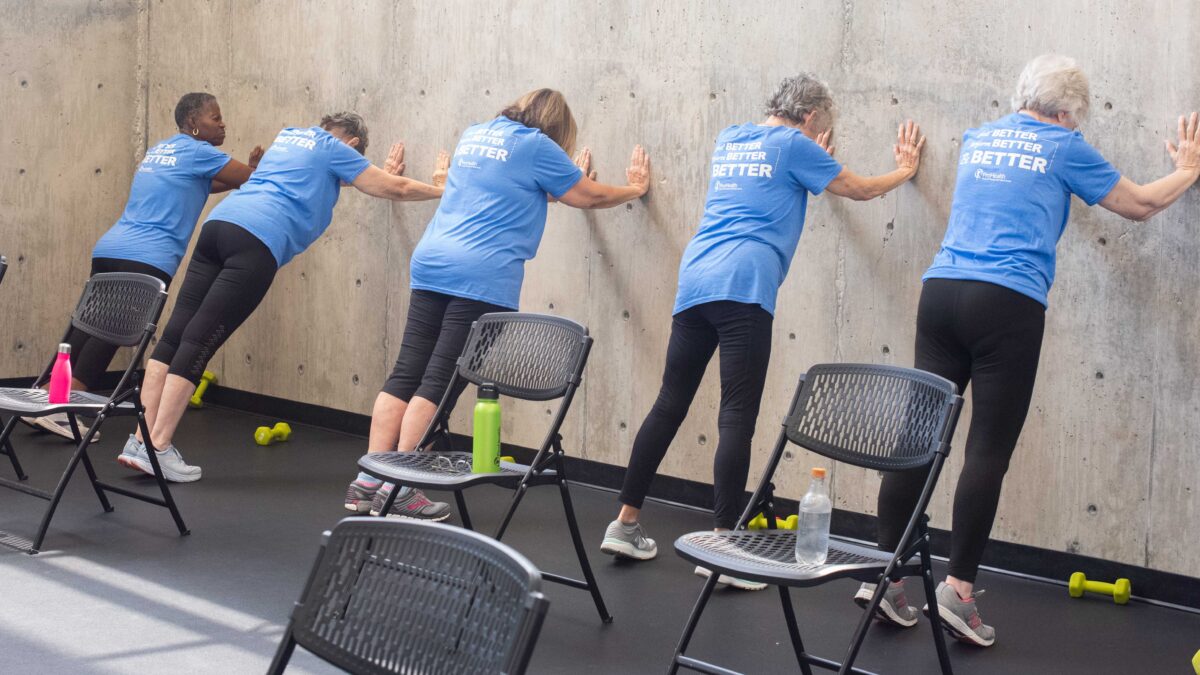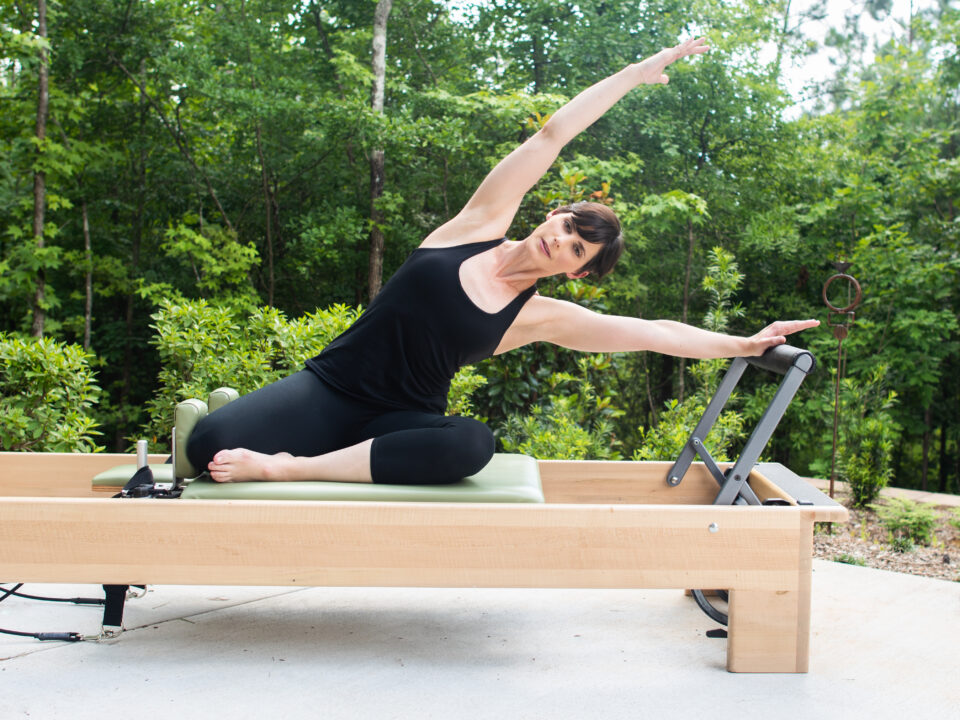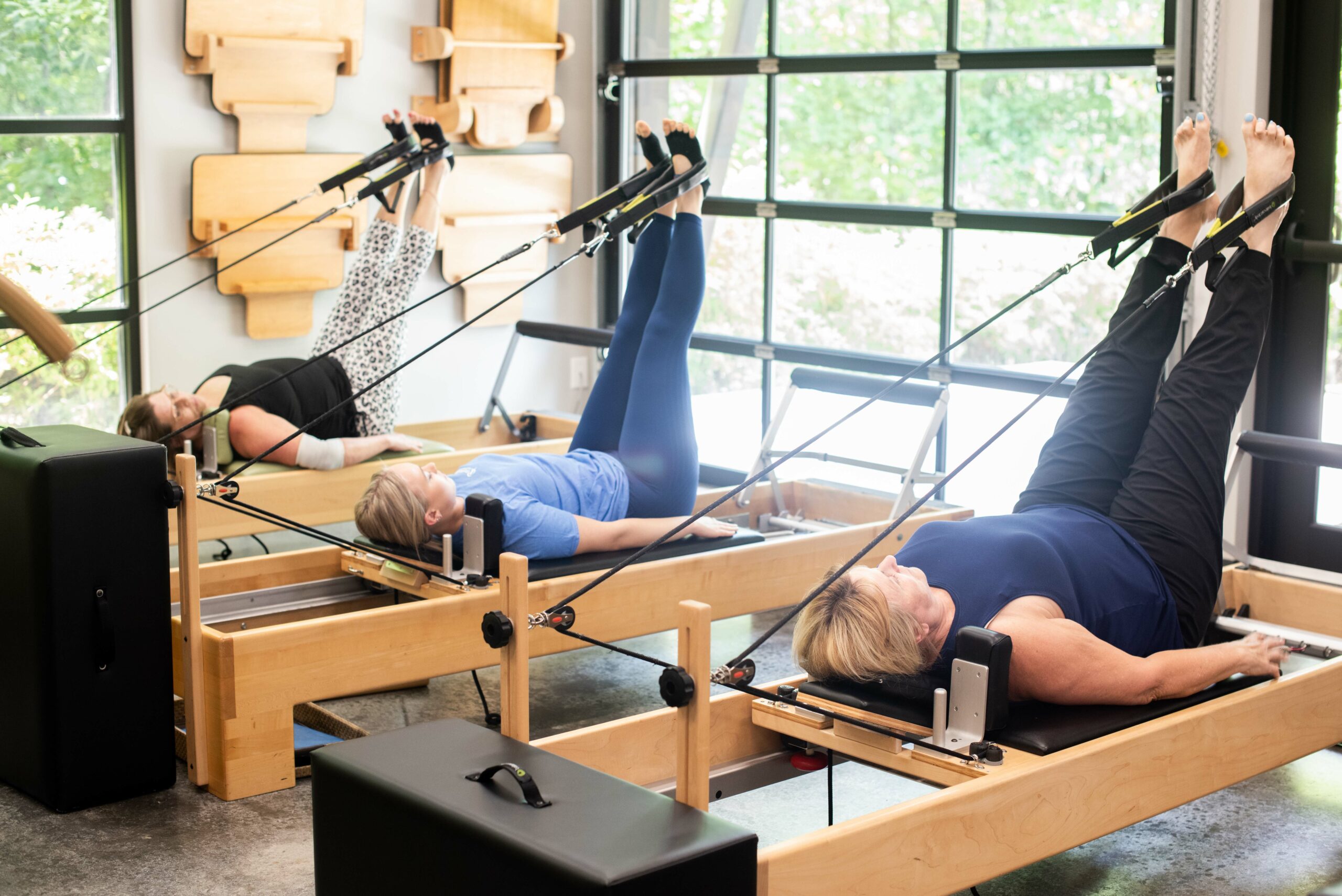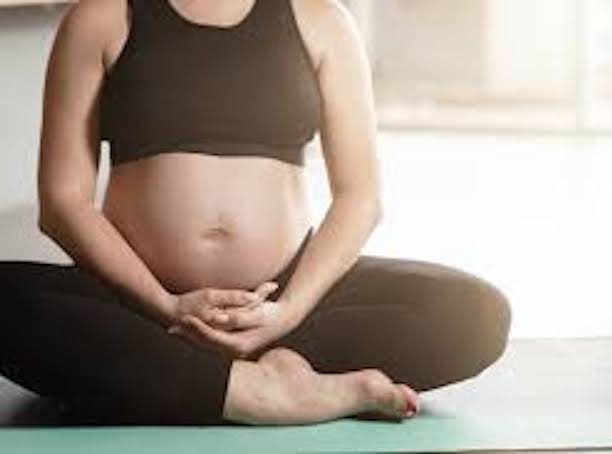- Mon - Fri
7.30 AM – 5.30 PM
Other hours upon request - 770-487-1931
Adapting Pilates for Individuals with Osteoporosis

Plank power
By Tamara Newell
Sept 2025
Osteoporosis occurs when bone loss happens gradually, often without symptoms, until a fracture occurs. For the millions of adults living with osteoporosis or osteopenia, the thought of exercise can stir up both hope and fear. But Pilates for osteoporosis is safe and effective for those with bone loss. Pilates helps support bone health by building core strength, and reduces your risk of injury by improving balance, mobility, and coordination. With proper modifications, Pilates becomes a powerful form of low-impact fitness tailored to those with fragile bones.
Why Exercise Matters for Osteoporosis
Bones are living tissue, constantly being broken down and rebuilt. As we age, this rebuilding process slows, leading to weaker bones. Without weight-bearing activity, bones become even more fragile, increasing the risk of fractures in the hips, spine, and wrists.
Weight-bearing exercise is vital for bone density. But not all forms of fitness are safe. High-impact workouts, twisting motions, or forward spinal flexion all place unnecessary stress on weak bones. That’s why safe exercise for weak bones must prioritize control, stability, healthy posture, balance, and proper alignment. Anatomically correct gait and foot alignment are also essential, along with core strength, to prevent broken bones from falls.
The Role of Pilates in Bone Health
Pilates is uniquely suited for individuals with osteoporosis because it emphasizes mindful, low-impact movement that strengthens muscles while protecting the spine. By focusing on posture, balance, and alignment, Pilates helps minimize the chance of falls and fractures.
Some key benefits include:
● Spine Strengthening: Pilates strengthens spine supporting muscles, improves stability, and reduces the risk of vertebral fractures.
● Postural Awareness: Many people with osteoporosis develop a stooped posture. Pilates helps correct alignment and build core strength, promoting an upright and confident stance.
● Core Stability: A strong core improves balance, lessening your chance of a fall. It also alleviates pressure on your spine and hips.
● Balance and Coordination: Gentle balance exercises lower fall risk, a significant concern for those with weakened bones.
Safe Modifications for Pilates and Osteoporosis
Not all Pilates exercises are safe for those with fragile bones. Traditional movements, such as “roll-ups” or exercises involving deep spinal flexion, can increase the risk of fractures. With careful adaptation, however, Pilates becomes both safe and effective.
Here are some guidelines for adapting Pilates for osteoporosis:
1. Avoid Forward Flexion: Skip exercises that involve bending the spine forward (like sit-ups). Instead, focus on lengthening and extending your movements.
2. Emphasize Neutral Spine: Keeping the spine in neutral alignment helps protect vertebrae and prevents excessive strain.
3. Incorporate Gentle Extension: Back-strengthening exercises such as gentle lifts and prone extensions encourage spinal health.
4. Add Resistance: Using light weights or resistance bands provides bone-strengthening load without high impact.
5. Focus on Hip and Leg Strength: Lower-body strength and movement awareness are essential for building endurance and improving gait. Along with core strength, this helps reduce the risk of falls.
Pilates Exercises Safe for Osteoporosis
Here are a few examples of safe, low-impact Pilates movements:
● Bridges: Builds glute and spine support while keeping the spine neutral.
● Clamshells: Strengthens outer hips for stability and balance.
● Modified Swimming: Engages back and core muscles safely.
● Standing Balance Work: Builds coordination while supporting bone strength.
ProHealth Pilates instructors are experienced in working with people new to Pilates. Modifications and a healthy, safe pace of progression is an important part of Pilates training at the studio. Over time, with increased strength, body awareness and confidence, your trainer will gradually challenge you in the complexity of exercises.
Getting Started Safely
Before beginning Pilates, consult your healthcare provider. Ideally, seek out a certified Pilates instructor trained in osteoporosis-safe methods. A knowledgeable teacher can help you avoid risky movements while maximizing the benefits of spine strengthening and core support.
Consistency is also key. Practicing Pilates two to three times per week can improve bone density, posture, and confidence over time. Even brief sessions offer significant benefits when performed regularly.




